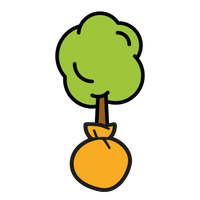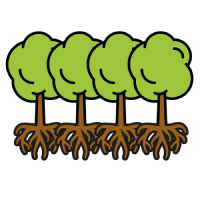We've dedicated time and care into growing your pot grown plant so it arrives looking stunningly new and healthy.
As well as pretty flowers, and rich green foliage, Darwins Barberry also produces blue-purple-coloured berries, and if you are lucky, a second round of flowers. The berries are also popular with wildlife, and often eaten by the birds. However, besides all this, most people recognise the Darwins Barberry hedge for its lovely Spring bursts of colour and prickly green foliage.
The Berberis darwinii really is the perfect hedge for many garden needs. It is an easy hedge to grow, even in the harshest conditions, and produces pleasant nodding flowers, with the dark green leaves turning a rusty-red, even though it is evergreen! As well as this, the prickly foliage is ideal for keeping intruders away, and it is perfect for providing year-round interest and colour to your garden.












